The ALL ON 6 restoration is extremely durable, typically lasting a lifetime, and rarely requires repairs or adjustments. However, complications occur in about 3% of cases, almost always before the final restoration is placed. Early complications include swelling, inflammation, and, in rare cases, implant rejection. Later complications are much milder and may involve polishing minor cracks, tightening screws, or occasionally removing the restoration for quick repairs. All such interventions are covered by warranty.
Although the risk of complications is low, it is crucial for patients to contact us if they suspect anything is wrong. For this reason, at the start of wearing the temporary restoration, we inform patients about what to watch for—how to detect swelling by touch, notice changes in gum color, spot pus formation, and recognize other warning signs. Patients from abroad, where obtaining antibiotics quickly may be difficult, receive additional doses to take home for such cases. They may also be given syringes with iodine or Listerine as a first-aid measure until they can reach us or their doctor.
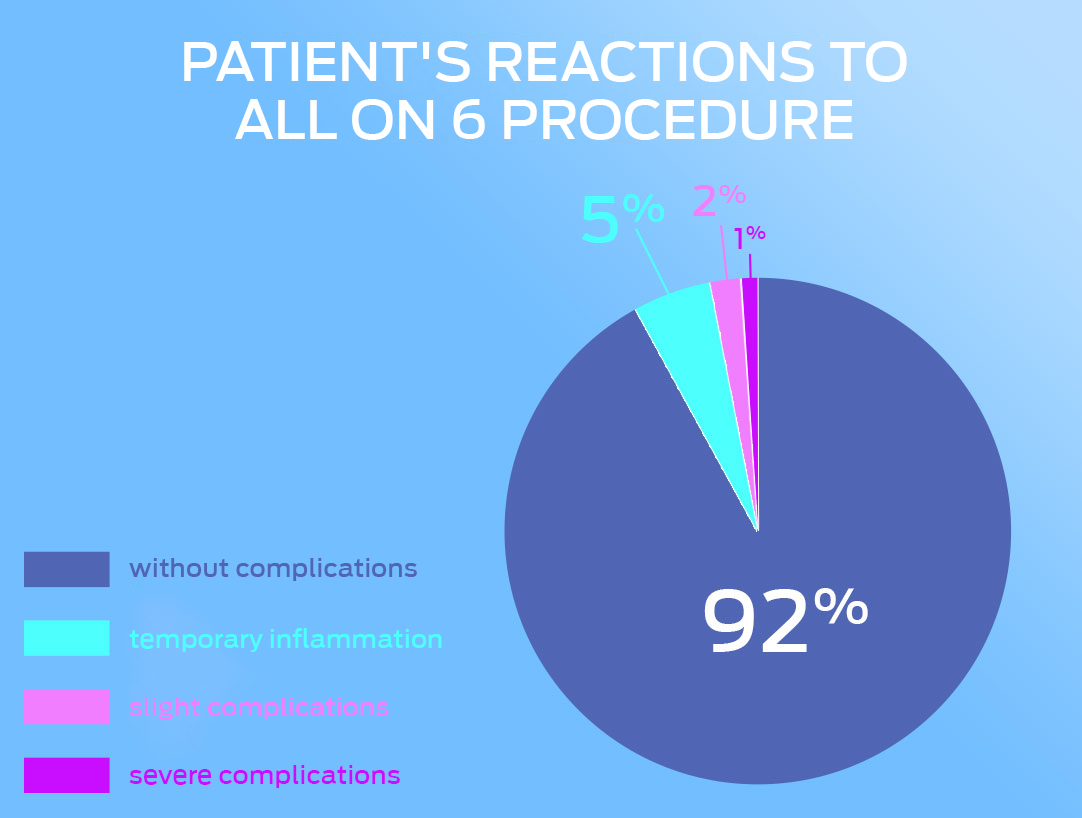
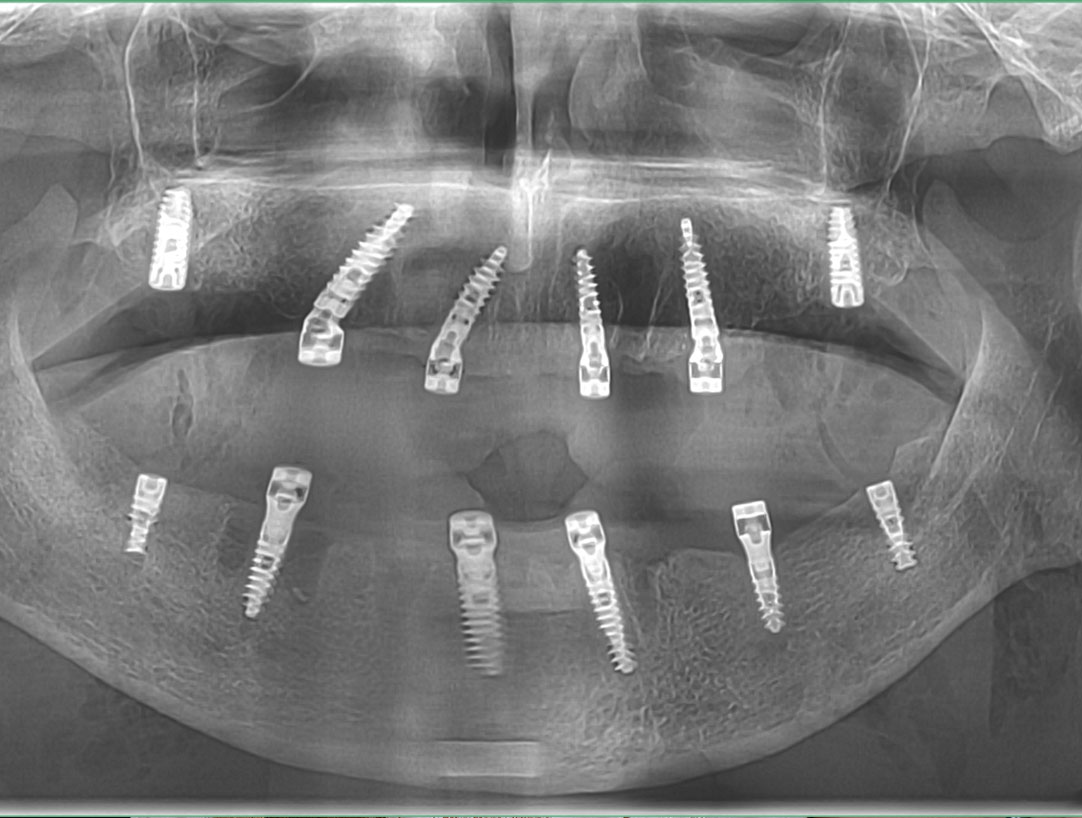
Losing an implant due to complications is the worst possible outcome for a patient wearing a temporary or final restoration. However, this is extremely rare, occurring in only 1% of cases..
Implant rejection without painful reactions, shortly after placement, when the body simply does not accept the implant, is a much less distressing outcome. This occurs in about 2% of cases, and usually involves the rejection of just one of the six implants. (In our practice, the rejection of two implants has never occurred.)
Fortunately, the ALL ON 6 restoration is designed for complete stability, even if one implant fails. The restoration can be modified, and a new implant can be placed in a neighboring position. Such corrections are covered by warranty.
The younger the patient, the fewer chronic conditions they have, and the healthier their lifestyle, the lower the risk of complications. With the ALL ON 4 restoration, there is far less room for adjustments. If an implant is rejected or later fails due to complications, it is nearly impossible for the ALL ON 4 restoration to remain stable on just three implants. Additionally, placing a new implant in an adjacent position is far more challenging compared to the ALL ON 6 procedure.
One reason why the price of the ALL ON 4 and ALL ON 6 restorations is the same, despite the ALL ON 4 requiring fewer materials, is the complexity of placing angled implants, avoiding nerves and sinuses, and working with a more limited bone structure. Patients eligible for ALL ON 4 typically have weaker bone density—otherwise, they would receive the ALL ON 6 solution.

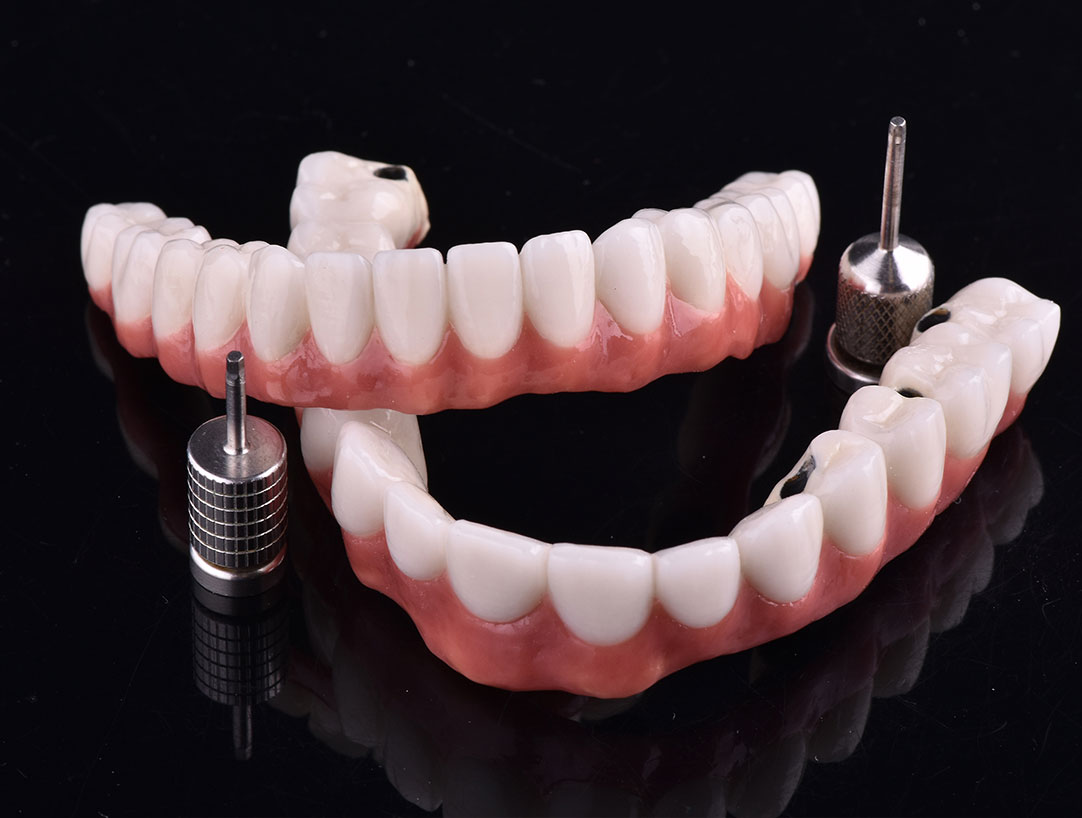
The most significant complication with the temporary restoration is fracturing or plastic chipping, which can occur if it is worn longer than the recommended 3–4 months. The temporary ALL ON 6 restoration is supported by a titanium framework, just like the final restoration, so fractures are purely an aesthetic issue and do not compromise the implants, even though they may seem alarming. In such cases, the patient receives a new temporary restoration within a few days, which is also covered by warranty.
Another possible issue is screw loosening. The patient may feel movement or hear a shifting sound. In such cases, the screw only needs to be replaced or tightened. However, if left unaddressed, there is a risk of the titanium framework detaching from the screws.
The core of the final ceramic restoration is made of titanium, ensuring that the restoration remains lightweight and flexible. Over this titanium core, a ceramic layer is placed, which is the only visible part of the restoration. The ceramic surface is easy to maintain and does not change color, even for smokers. This type of restoration typically lasts a lifetime. While some dentists offer final restorations made of plastic, our clinic does not use this option because acrylic is not a durable material—it absorbs odors, changes color, and becomes prone to fractures over time, requiring frequent replacement every few months. Another technique our clinic does not use is zirconia instead of a titanium core. For a restoration to last for decades, the core must be titanium.
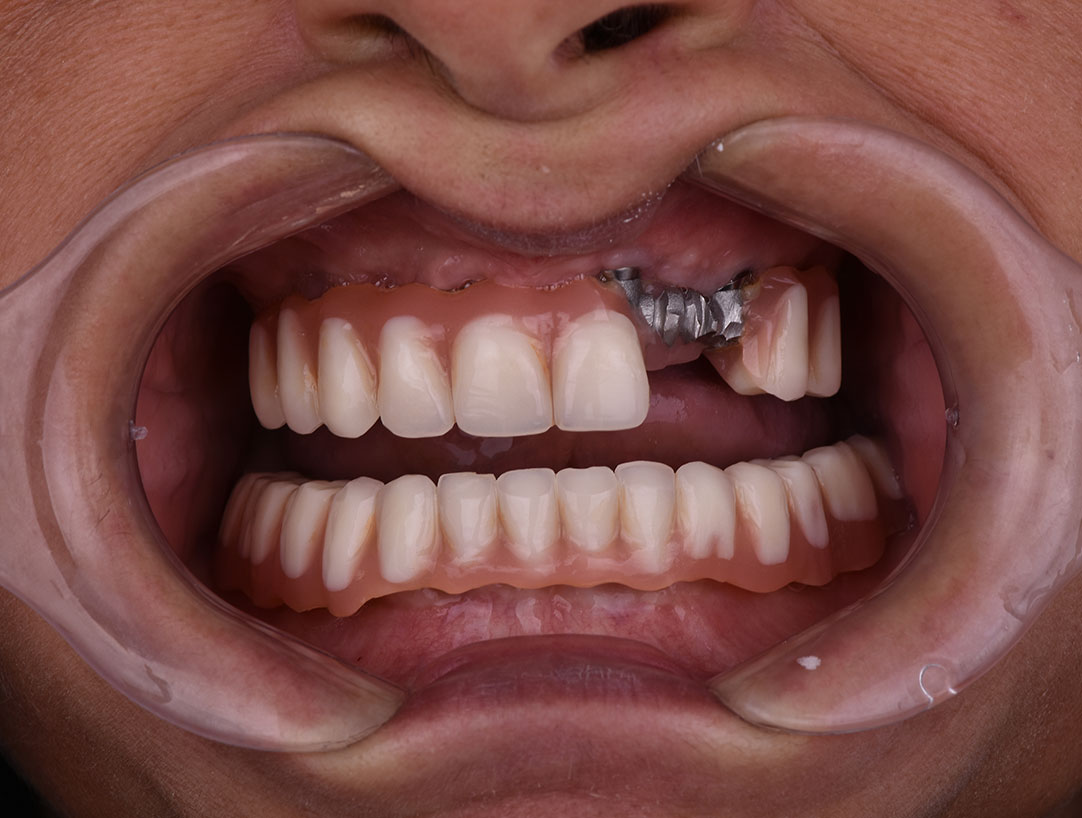

In some cases, minor chipping of the ceramic layer in the final restoration may occur. If the damage is minimal, it can be polished without removing the restoration.. If the damage is more significant, the restoration is unscrewed and repaired, which takes a few days. For this reason, patients must keep their temporary restorations even after receiving their final ones. The temporary restoration is included in the total price of the ALL ON 6 treatment, as is a replacement if the temporary restoration fractures before the final one is placed. However, if a patient loses the temporary restoration, they must pay for a new one—not because of the cost, but because of the time required to produce it, especially in cases where the final restoration needs repairs.
To prevent potential damage to the final restoration, it is advisable to wear protective night guards over the ALL ON 6 restoration during the first few months. This helps avoid accidental damage caused by unconscious movements during sleep. The brain needs time to adjust to the presence of teeth, as the jaw has a smaller range of motion than before, when teeth were missing. The night guard helps prevent nighttime grinding.
As with the temporary restoration, there is a possibility of screws loosening in the final restoration. However, the final restoration is secured with greater force than the temporary one, making this even less likely. If loosening occurs, the screws can be easily replaced or tightened, but the patient must visit their dentist as soon as they notice any movement.
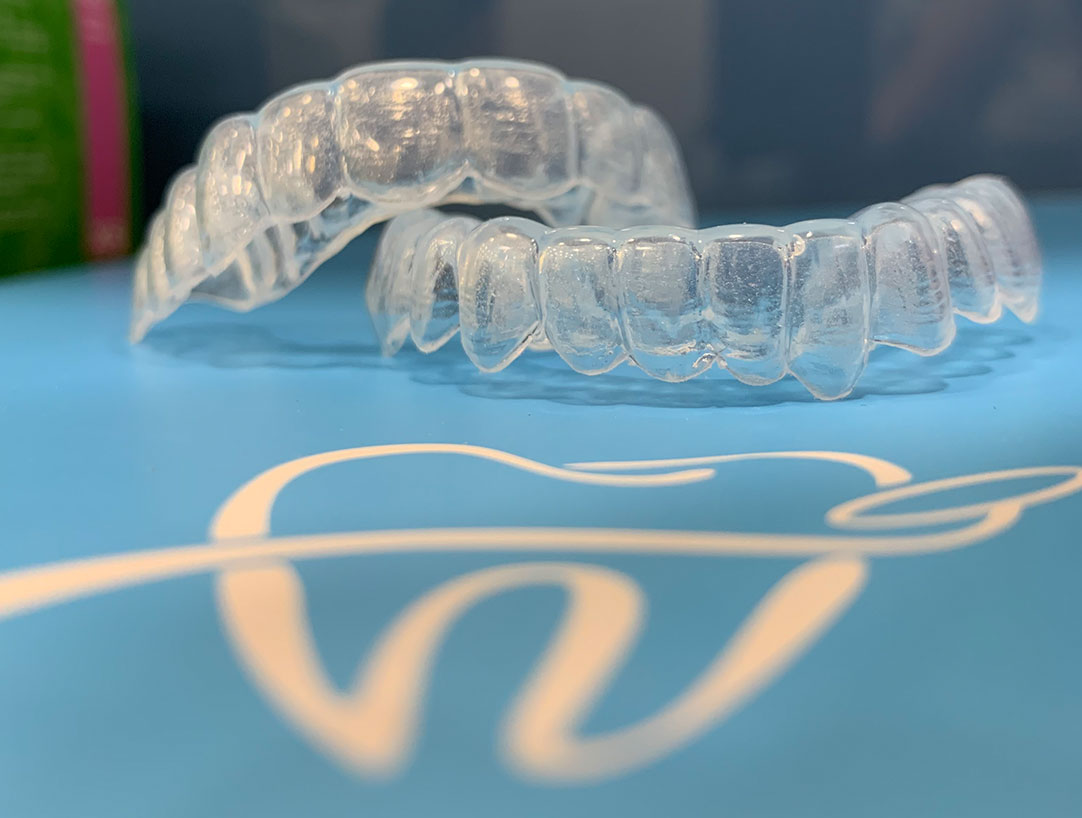
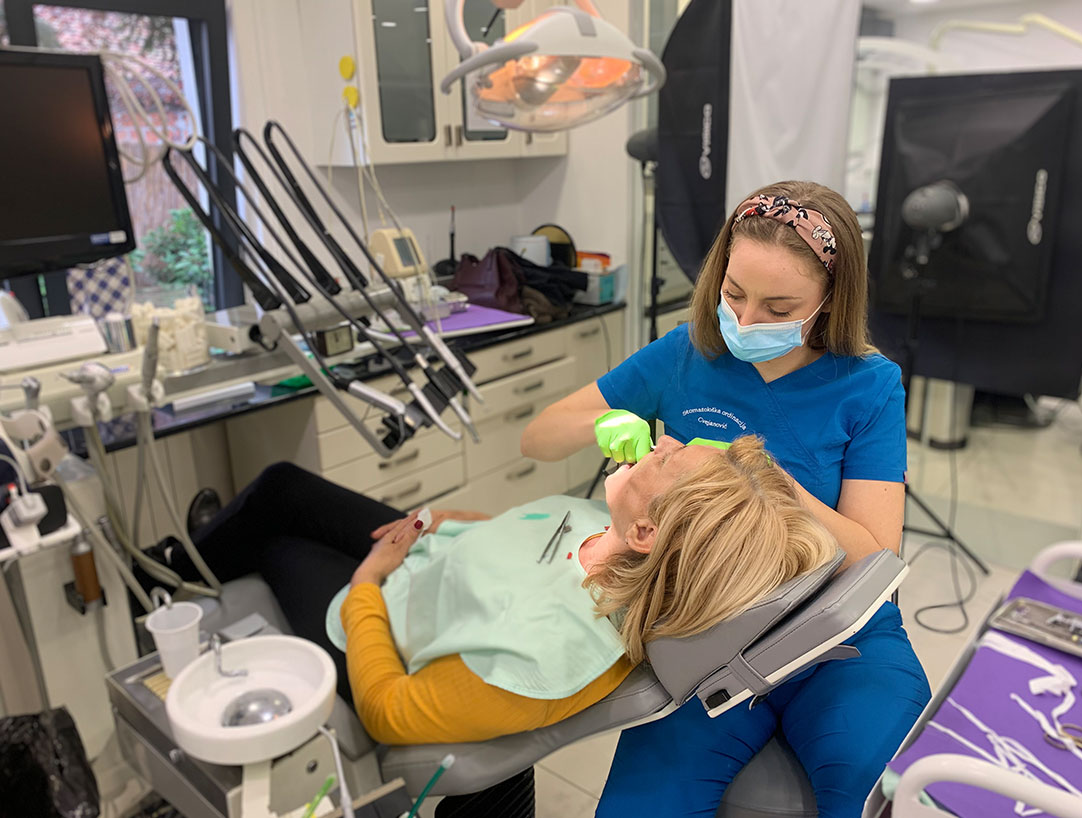
To maintain the five-year warranty on the restoration, check-ups every six months are mandatory. These check-ups are crucial, even when everything appears perfect, as the bite may gradually change after receiving the ALL ON 6 restoration. This can lead to unforeseen forces affecting certain areas of the restoration. Unless there is a suspected complication, patients do not need to visit the clinic in person. Instead, they send panoramic X-rays, allowing our specialists to assess any changes in implant positioning or signs of inflammation.
In our practice, we have observed that inflammatory processes can occur when immunity drops due to stress, illness, or similar situations. A healthy lifestyle, including stress management, is therefore essential for maintaining strong immunity—especially for those with an ALL ON 6 restoration.